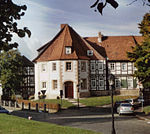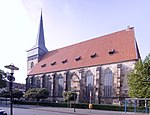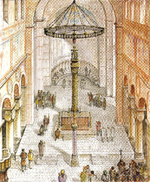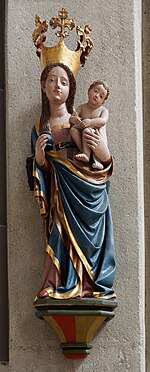Hohnsensee
Lakes of Lower Saxony

The Hohnsensee is a lake in Hildesheim, Lower Saxony, Germany, covering 9.3 hectares.It is located south of Neustadt between the street Hohnsen, the Innerste, the outdoor pool Johanniswiese and the washland of the Innerste. It was created by gravel mining from 1966 to 1974 and is named after the abandoned village Hohnsen.The northern part of the Hohnsensee is part of the open-air swimming pool Johanniswiese, and includes a 150 m long sand beach.
Excerpt from the Wikipedia article Hohnsensee (License: CC BY-SA 3.0, Authors, Images).Hohnsensee
B 243, Hildesheim Ochtersum (Ochtersum)
Geographical coordinates (GPS) Address Nearby Places Show on map
Geographical coordinates (GPS)
| Latitude | Longitude |
|---|---|
| N 52.133333333333 ° | E 9.95 ° |
Address
B 243
31139 Hildesheim, Ochtersum (Ochtersum)
Lower Saxony, Germany
Open on Google Maps









